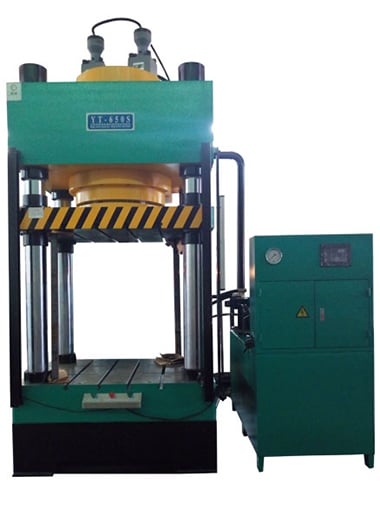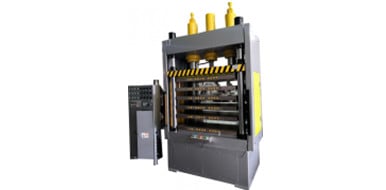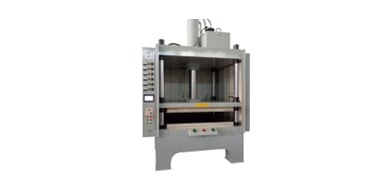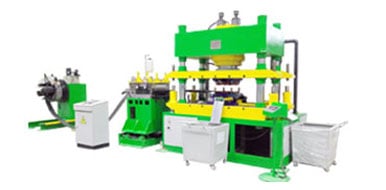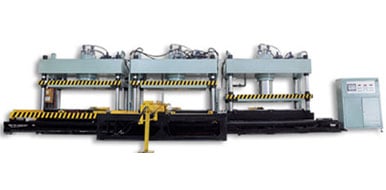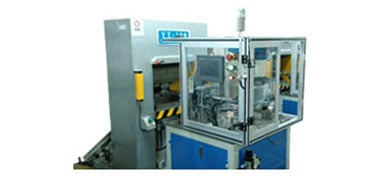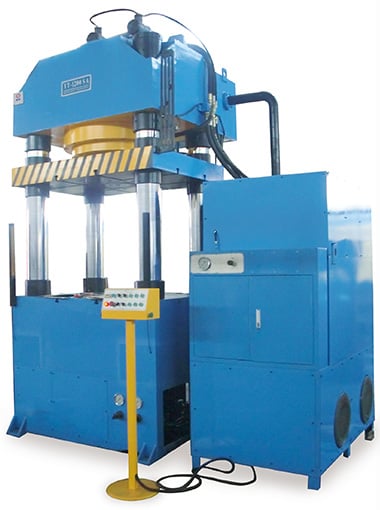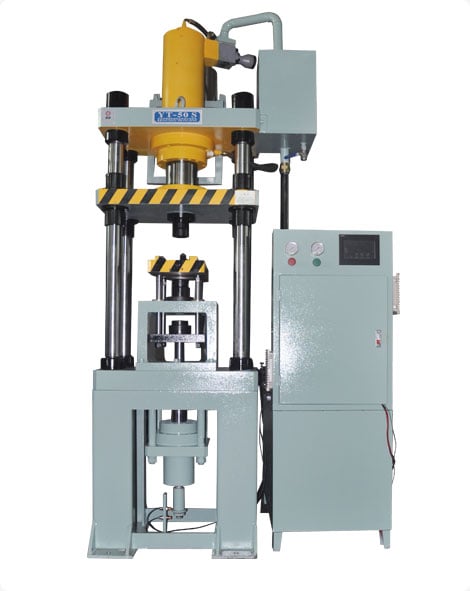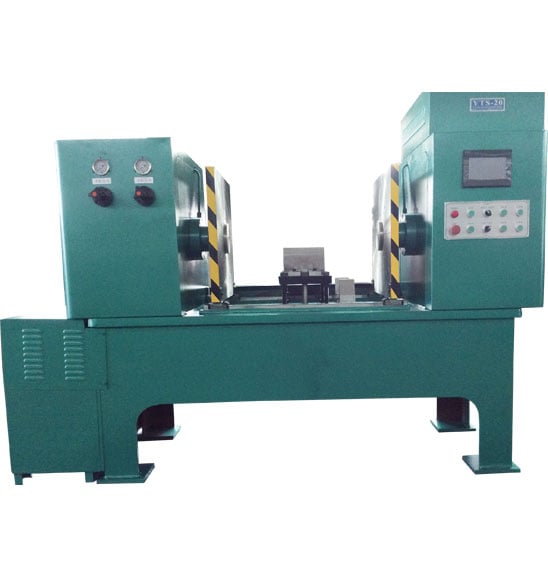How to Make a Ring Using a Hydraulic Press
time:2023-07-26 views:(点击 959 次)A hydraulic press uses Pascal's law to generate massive forces. It consists of a strong metal frame into which is fitted a hydraulic cylinder; then, using high-pressure hydraulic oil from its power unit, this hydraulic cylinder extends or retracts with ease.
Richard provides instruction on how to size and insert metal into a die, as well as additional tips for creating tasteful three-dimensional shapes. Richard also discusses annealing techniques to reduce stress and make shapes more durable.
Basics
A hydraulic press is a tool that uses high levels of force to crush, bend, draw, punch, trim, stamp and form metal and other materials. It has applications across industries including metalworking, plastics and composites manufacturing construction and automotive. To understand its operation, one needs an understanding of physics behind this machine.
Hydraulic presses use liquid to generate pressure, typically oil but also water and certain emulsified chemicals. They're powered by either manual or electric pumps that generate fixed amounts of pressure rated in tons, which then force an expanding cylinder outwards under its own power; pressure then flows to materials through cap or rod end ports that can be independently managed by their press operator.
People have gained internet notoriety by crushing cheese and magnets with hydraulic presses, yet these important tools serve many more practical purposes than that. Jewelers find hydraulic presses particularly helpful. In this article, we'll look at using one to make rings and other forms of jewelry.
Prior to using a hydraulic press, the metal must first be sized and annealed. Richard shows us how this can be accomplished before using his die to secure it with some steel plates for protection of his workpiece. Next he presses his metal using his press, adding three or four rubber inserts over negative space within his die until reaching his desired depth of metal. To create tasteful ridges in his completed jewelry piece Richard removes these inserts before repressing his metal and annealing again - an action Richard repeats once his metal has set.
Once you've gained an initial grasp on how to operate a hydraulic press, it's time to experiment with some more techniques. Richard shows in this video how a hydraulic press can help him craft an original belt buckle design using various dies and pressing techniques - everything from initial preparation of the belt buckle and selecting suitable dies through using the press to produce intricate patterns in metal sheets.
Materials
Use of a hydraulic press can be daunting at first, but once you understand its basic workings and use effectively, creating beautiful rings will become simple. Before beginning, ensure your work area is safe and clean as well as having all of the required materials like scrap metal ring dies made out of scrap and rubber inserts for depth control - Richard from Canada who specializes in metalsmithing and jewelry making recommends using inner tubes as inserts as they're both cost-effective and flexible -
Hydraulic presses are versatile tools used across industries for various purposes. From metal forming and drawing to stretching, punching and powder (metal and non-metal) forming to pressing out parts - hydraulic presses play an essential part in fabrication, assembly and maintenance processes. There are various types of hydraulic presses depending on your specific requirements: H-frame hydraulic presses; four column hydraulic presses (C type), vertical frame hydraulic presses as well as universal hydraulic presses.
Hydraulic presses utilize a pump that produces a fixed force, pushing a steel cylinder at an established rate into a material. The hydraulic cylinder can then be extended or contracted as needed to compress or separate parts, attached by means of a moveable support and attached directly to the press.
This article will provide an introduction to hydraulic presses, their uses in industry and an overview of one available from XRF Scientific. Furthermore, we will discuss its maintenance as well as ways to avoid common issues that may arise.
Hydraulic presses may have become popular online for crushing items like cheese and magnets on social media, but they also serve an array of practical uses in manufacturing and other fields. In this blog post we'll look into how hydraulic presses operate as well as its many uses in industry.
Peter began making jewelry under his uncle, Master Goldsmith Phil Poirier. Once he learned everything he could at his uncle's bench, Peter accepted employment at Bonny Doon Tools where he became proficient in machinery and die making - now making wedding and engagement rings, bolo ties and one-of-a-kind pieces of contemporary metalwork.
Tools
No matter if you are a metalsmith, sculptor, artist or everyday maker - certain tools will make your job simpler and faster. A hydraulic press can save both time and energy when forming, bending or shaping metal sheet. Here we demonstrate how using one to make rings from blanks.
Start off by collecting a metal blank and the die you plan on using for your ring project - in this instance a heart silhouette die. A silhouette die does not cut through metal; rather it simply presses material into its negative spaces to form its desired outline.
Rubber inserts will help achieve the desired depth for the rings during pressing. Richard uses old inner tubes to fashion stacks of inserts slightly smaller than one another to achieve a gentle doming effect when pressing metal. Once your die and inserts are assembled, simply place your ring in your press, raise its front safety guard, and crank the handle to start pressing!
Once the ring has been pressed, it should be carefully removed from its die and any rough edges should be smoothed with a file to ensure a comfortable wear experience. We advise coating the interior cup of your ram head with lubricant for extra grip and protection during pressing process.
Rio Grande offers an in-depth course to teach jewelry makers how to use a hydraulic press for jewelry making, with Bonny Doon toolmakers G. Phil Poirier and Brooke Barlow showing how blanking dies work on hydraulic presses to quickly transform bracelet or ring blanks into finished bracelets and rings. In addition, manual vs electric presses, press accessories/tools needed, as well as safety precautions are covered as part of this video series.
Safety
Hydraulic presses are powerful machines capable of exerting high levels of pressure. Their safe use depends on several factors, including proper usage and maintenance; improper usage could result in accidents, injuries or even fatalities, so users should understand all risks involved before operating one.
Hydraulic presses consist of several main components: the hydraulic pump, control valves and hydraulic cylinder. The pump converts mechanical energy into hydraulic energy to operate the cylinder and other machine parts; control valves manage flow of hydraulic fluid throughout the system while also relieving pressure when necessary; while reservoirs store and collect any used hydraulic fluid.
Hydraulic systems need regular inspection and maintenance in order to continue functioning effectively, which includes regular checks. By doing this, issues can be identified before becoming serious and prevent expensive failures from occurring. When not maintained on an ongoing basis, their hydraulic systems can become subject to three types of hazards.
Servo presses offer greater accuracy than hydraulic machines, yet require additional care in terms of maintenance. They contain many moving parts and complex circuits that need to be periodically checked for safety and efficiency; moreover, their operating speeds tend to be slower - which increases the potential risk of injuries to operators.
Hydraulic presses serve an essential purpose: they apply pressure to metal, shaping it into desired forms. These systems are capable of performing many processes such as metal forming, blanking, drawing, piercing and cutting - perfect for mass production with specific requirements for slider velocity, pressure and position.
The four-column hydraulic press is one of the most frequently utilized machines used for jewelry making. It offers several advantages over other forms of machinery, including its ability to create deep impressions in metal. Before beginning using one for yourself, however, it's essential to understand its basic workings before getting to work creating jewelry using one. Richard provides an in-depth explanation of using a hydraulic press in forming metal from start to finish - from sizing and annealing material all the way through placing it into dies.
Link to this article: https://www.ihydraulicpress.com/nsn/3953.html
Hot Articles
-
How Can Make a Small Hydraulic Hot Press?
Hydraulic presses use fluid pressure to compress, assemble, punch, trim, stamp, and stretch materials – offering limitless engineering possibi……
-
How to Make a Hydraulic Press Model
Hydraulic presses use liquid under pressure to exert force on an anvil and die, making it easy to crush all sorts of items. Individuals looking to g……
-
How Much Force Can a Hydraulic Press Exert?
A hydraulic press can exert tremendous forces, as you have likely witnessed on YouTube videos showing it crush objects such as golf balls and books.……
-
How to Make a Hydraulic Hash Press
DIY Rosin Pressing involves an H-frame hydraulic press and set of rosin plates; this solution offers both cost-efficiency and customization of pre……
-
How to Make Dabs With a Hydraulic Press
Hydraulic rosin presses are considered the superior option, since they do not need to be plugged in and come at a more reasonable cost point than ……
-
How Much Money Does Lauri Vuohensilta Make With His Hydraulic Press Channel?
Lauri Vuohensilta of Finland launched his Hydraulic Press Channel in 2015 and has seen it gain immense popularity ever since. The videos displayed……
-
How to Make a Hydraulic Apple Press
Nothing quite captures the spirit of autumn like sipping fresh, homemade apple cider from your very own cider press – although commercial pr……
-
How to Make Dabs With a Hydraulic Press
Rosin is an easy and safe method of extracting cannabis concentrate, without the use of hazardous or poisonous chemicals. Furthermore, it maintains ……
Latest News
-
How to Make a Hydraulic Press Machine
Hydraulic presses are machines that utilize compressed fluid to apply force. They’re commonly found across a range of manufacturing and prod……
-
Hydraulic Press Channel – How Much Does Hydraulic Press Channel Make?
Five years ago, Finnish factory owner Lauri Vuohensilta uploaded videos showing himself crushing objects using his hydraulic press. Soon thereafte……
-
How to Make a Hydraulic Cider Press on a Budget
As cideries increase production volumes, hydraulic presses become an essential tool. They require less time than folding cloth between batches and……
-
How to Make a Hydraulic Press From Scrap Metal
If you want to apply serious pressure in your workshop, a hydraulic press is essential – but instead of purchasing one premade from scrap meta……
-
How to Make a Small Hydraulic Press
Hydraulic presses are used in factories to perform metal working operations such as forming, punching, deep drawing and coining quickly and effici……
-
How to Make a Ring Using a Hydraulic Press
Hydraulic presses are widely utilized in industrial manufacturing to shape everything from wiper blades and automobile parts, to wiper blades them……
-
How Much Money Does the Hydraulic Press Channel Make?
Established in October 2015, the Hydraulic Press Channel (HPC) features videos of objects being crushed with hydraulic presses. Operated by Finnish ……
-
Can You Make Manual Press Into Hydraulic Press?
Manual presses are essential pieces of machinery found in nearly every factory, used for stamping, marking, deep drawing as well as forming, crimp……







